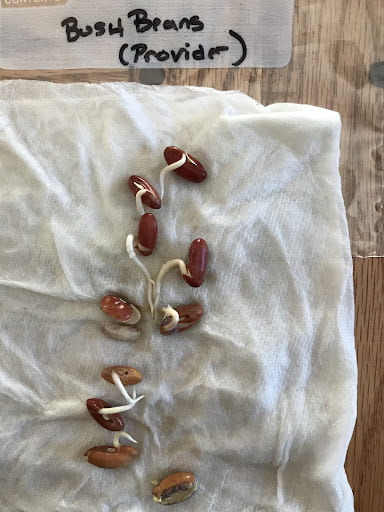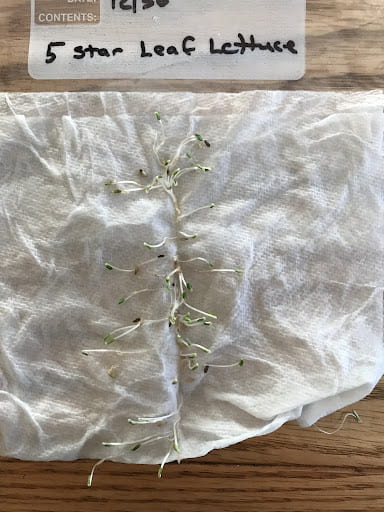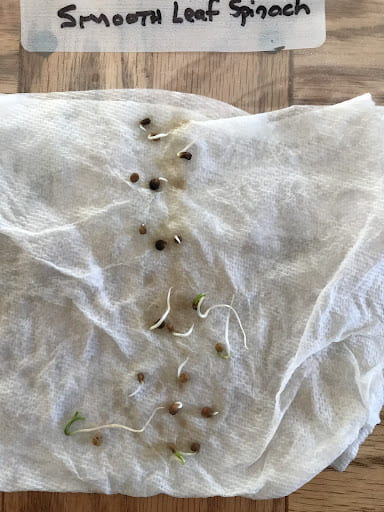It’s a question gardeners are faced with every year around this time: Do I throw away leftover seeds from last year or should I keep them for replanting this upcoming gardening season? With the high price of garden seeds (I see some new varieties of tomatoes are costing nearly 1 dollar per seed!), it would seem prudent to keep any leftover seeds for future use, but it feels risky to forgo a seed order and depend on older seeds, which may fail to germinate adequately, or germinate so poorly that I lose out on the crop I was planning to grow.
I’m a little embarrassed to admit that I’ve never been one for holding on to old seeds. Despite all the training and years of gardening under my belt, I admit I have been known to throw away seeds each winter that had been sitting in their original packaging in the basement since the summer before. This year it seems that I have more than the usual number of seed packets left over from last summer, particularly many varieties of lettuce and spinach, so I decided it’s time to take on this question of whether I can depend on old seeds despite the fact that I didn’t exactly store them properly.
I started by doing some reading on the topic. Turns out the only way to know what proportion of your old seeds remain viable is to perform a seed germination test. After reading a blog post on the High Mowing Organic Seeds website entitled “How to do a quick germination test at home,” I decided to give it a try.
In a nutshell: High Mowing describes the process as follows:
- Moisten a double thick piece of paper towel and fold it in half.
- Open paper towel and place a minimum of 10 seeds on one side of the towel.
- Fold the towel to cover the seeds.
- Place seeds in a plastic bag or on a plate covered with plastic. Do not totally seal.
- Place bag/seeds in a warm place (mine are on the top of the refrigerator).
- Check daily for proper moisture so they don’t dry out.
- Most should germinate within 3-10 days. Flowers and herbs longer, read the back of the package for approximate germination time.
- Check seeds every few days to monitor seed quality and germination rate.
- High Mowing recommends throwing away seeds that have less than 60% germination.
Here’s what my germination test looked like when I started it on 12/30/21.
And here are my germination test results. Photos are from 1/3/22, only 4 days later. As you can see I’ve had successful germination with the four types of seeds tested for germination.




My germination seed test was a real success and was very easy to do. I have learned two things from this process: First, although my seed storage method may not have been the best, the seeds nonetheless remain viable for reuse in 2022. The four types of seeds I tested all had germination rates over 60%. With good seed storing practices, I may be able to store seed for several years while maintaining viability! Second, I’ve been throwing away money all these years by not saving the previous year’s leftover seeds.
Before you order this year’s seeds, try a quick germination test of what you have left over from previous years. It’s a fun experiment for the off-season and you may save yourself some hard earned money.
I’m usually not one for making New Year’s resolutions, however I’ve decided to make an exception and resolve to properly store leftover seeds from the 2022 gardening season for use in 2023. In my next post I’ll discuss the proper method for storing seeds, what seeds can be stored for the following year, and how long some seeds can actually last in storage (some seeds can reliably last as long as 5-6 years!). Stay tuned…
Ken Kogut has been a Master Gardener Volunteer since 2014. A retired NY DEC Natural Resource Supervisor and Wildlife Biologist, Ken now spends his time maintaining his garden, berry patches, and small orchard with a goal of living sustainably off his property. He particularly enjoys helping county residents solve their gardening issues, writing short articles for gardeners, and teaching new gardeners in Seed to Supper classes.
If you have any questions about seed germination, or any other garden-related topic, please contact the “Growline” at 315-379-9192 x239 or SLCGrowline@gmail.com. Our Master Gardener Volunteers are trained to help you succeed!
